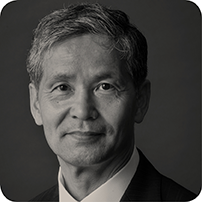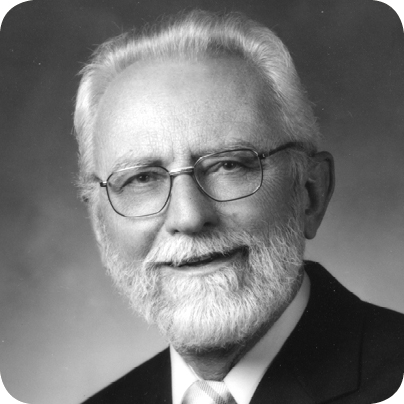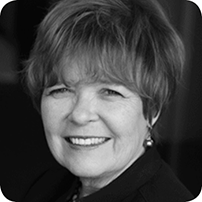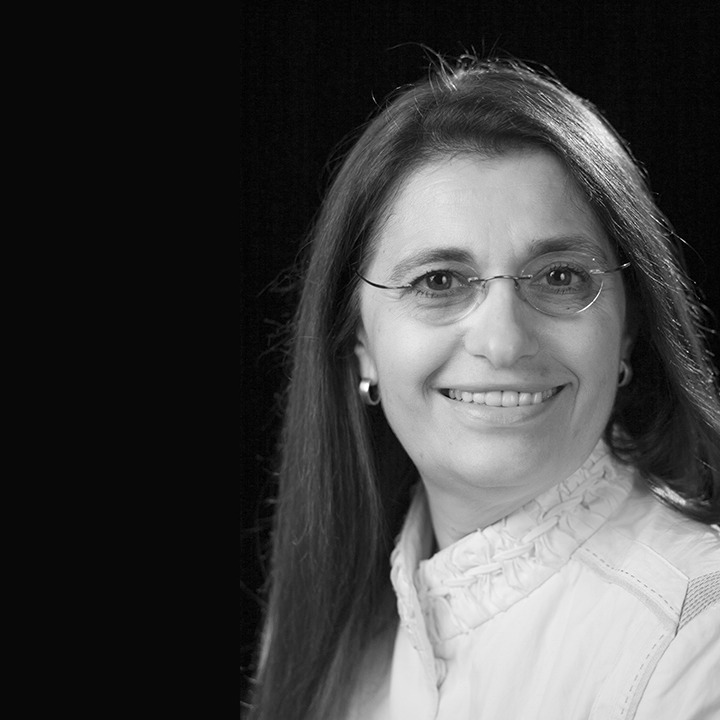|
The Evolution of the Human Mind Can Be Understood Through the Study of Chimpanzees in the Wild and the Laboratory |
| Monday, September 28, 2015 |
| 8:00 AM–8:50 AM |
| Taketori |
| Area: EAB; Domain: Experimental Analysis |
| Instruction Level: Basic |
| CE Instructor: Richard W. Malott, Ph.D. |
| Chair: Richard W. Malott (Western Michigan University) |
| TETSURO MATSUZAWA (Primate Research Institute, Kyoto University) |
 Dr. Matsuzawa has been studying chimpanzee intelligence both in the laboratory and in the wild since 1976. His laboratory work is known as the "Ai-project." He has also been studying tool use in wild chimpanzees in Bossou-Nimba, Guinea, West Africa, since 1986. Ongoing studies are published at http://langint.pri.kyoto-u.ac.jp/ai. Matsuzawa tries to synthesize field and lab work to understand the nature of chimpanzees. He has published journal articles, as well as books such as Primate Origins of Human Cognition and Behavior, Cognitive Development in Chimpanzees, and The Chimpanzees of Bossou and Nimba, all published by Springer. He has received several prizes, including the Prince Chichibu Memorial Award for Science in 1991, the Jane Goodall Award in 2001, and The Medal with Purple Ribbon in 2004. Dr. Matsuzawa has been studying chimpanzee intelligence both in the laboratory and in the wild since 1976. His laboratory work is known as the "Ai-project." He has also been studying tool use in wild chimpanzees in Bossou-Nimba, Guinea, West Africa, since 1986. Ongoing studies are published at http://langint.pri.kyoto-u.ac.jp/ai. Matsuzawa tries to synthesize field and lab work to understand the nature of chimpanzees. He has published journal articles, as well as books such as Primate Origins of Human Cognition and Behavior, Cognitive Development in Chimpanzees, and The Chimpanzees of Bossou and Nimba, all published by Springer. He has received several prizes, including the Prince Chichibu Memorial Award for Science in 1991, the Jane Goodall Award in 2001, and The Medal with Purple Ribbon in 2004. |
| Abstract: Humans and chimpanzees are largely similar at early developmental stages, but there are several crucial differences. Chimpanzees have been very rarely observed to engage in general imitation and active teaching. Young chimpanzees possess exceptional working memory capacities, often superior to those of human adults. In contrast, their ability to learn the meaning of symbols is relatively poor. Chimpanzees show collaboration and altruistic behavior to some extent, but not as much as humans do. Human infants are typically raised by more than one adult; not only the mother, but also the father, siblings, grandparents, and other members of the community. The human infant is characterized by the stable supine posture of the neonate that enables face-to-face communication via facial expressions, vocal exchange, manual gestures, and object manipulation because both hands are free. The stable supine posture helps to make us human. The development of social cognition in humans may be integrally linked to this mother-infant relationship and the species-specific way of rearing the children. Based on the parallel effort of fieldwork and laboratory study of chimpanzees, Dr. Matsuzawa presents possible evolutionary and ontogenetic explanations for aspects of cognition and behavior that are uniquely human. |
| Target Audience: TBD |
| Learning Objectives: TBD |
|
| |
| |
|
| Selection of Social Environments and Selection of Cultures |
| Monday, September 28, 2015 |
| 9:00 AM–9:50 AM |
| Taketori |
| Area: CSE; Domain: Theory |
| Chair: Linda J. Parrott Hayes (University of Nevada, Reno) |
| CE Instructor: Linda J. Parrott Hayes, Ph.D. |
| Abstract: A review of cultural contingencies and social enviroments. |
| |
Cultural Behavior at the Level of the Individual |
| LINDA J. PARROTT HAYES (University of Nevada, Reno) |
| Abstract: Much of the discussion of cultural matters in the behavioral tradition is pitched at the level of groups of persons as they are engaged in societal or organizational circumstances. The aim of this contribution to the program is to consider the nature and value of a conceptualization of cultural behavior at the level of the individual person, as is characteristic of analyses in the psychological domain. The characteristics of this type of behavior, the conditions under which it is established, developed and changed will be discussed. Relations between cultural behaviors of individuals and those of groups will be explored. |
 Linda J. Parrott Hayes, PhD, is a Distinguished International Professor at the University of Nevada, Reno (UNR). She received her undergraduate degree from the University of Manitoba and her graduate degrees from Western Michigan University. She was a member of the Behavior Analysis faculty at West Virginia University while completing her doctorate, after which she returned to Canada, taking a position at St. Mary’s University. Dr. Hayes co-founded the Behavior Analysis Program at UNR on a self-capitalization model and served as its director for more than a decade. She has received numerous awards for her contributions to the training of behavior analysts including the Fred S. Keller Award for Teaching of Behavior Analysis from the American Psychological Association’s Division 25, an Outstanding Teacher Award from the College of Arts and Sciences at West Virginia University, an Outstanding Faculty Award from the Board of Regents of the Nevada System of Colleges and Universities, an Outstanding Alumna Award from Western Michigan University, and for the program she founded a Society for the Advancement of Behavior Analysis (SABA) Award for Enduring Contributions to Behavior Analysis. Dr. Hayes also founded and directs UNR’s Satellite Programs in Behavior Analysis, aimed at meeting the ever-growing demand for qualified practitioners in regions where appropriate training has been unavailable or inaccessible. Her efforts in this regard have earned her an International Development Award from the Latin Association for Behavior Analysis and Modification, a Global Engagement Award from UNR, and a SABA International Development Award. She is a Fellow of the Association for Behavior Analysis International and has served the association in many capacities including coordination of its Practice and Education Boards and serving multiple terms on its Executive Council. Dr. Hayes’ scholarly interests range from the experimental analysis of animal behavior to the logic of science. She is best known for her contributions to behavior theory and philosophy. Linda J. Parrott Hayes, PhD, is a Distinguished International Professor at the University of Nevada, Reno (UNR). She received her undergraduate degree from the University of Manitoba and her graduate degrees from Western Michigan University. She was a member of the Behavior Analysis faculty at West Virginia University while completing her doctorate, after which she returned to Canada, taking a position at St. Mary’s University. Dr. Hayes co-founded the Behavior Analysis Program at UNR on a self-capitalization model and served as its director for more than a decade. She has received numerous awards for her contributions to the training of behavior analysts including the Fred S. Keller Award for Teaching of Behavior Analysis from the American Psychological Association’s Division 25, an Outstanding Teacher Award from the College of Arts and Sciences at West Virginia University, an Outstanding Faculty Award from the Board of Regents of the Nevada System of Colleges and Universities, an Outstanding Alumna Award from Western Michigan University, and for the program she founded a Society for the Advancement of Behavior Analysis (SABA) Award for Enduring Contributions to Behavior Analysis. Dr. Hayes also founded and directs UNR’s Satellite Programs in Behavior Analysis, aimed at meeting the ever-growing demand for qualified practitioners in regions where appropriate training has been unavailable or inaccessible. Her efforts in this regard have earned her an International Development Award from the Latin Association for Behavior Analysis and Modification, a Global Engagement Award from UNR, and a SABA International Development Award. She is a Fellow of the Association for Behavior Analysis International and has served the association in many capacities including coordination of its Practice and Education Boards and serving multiple terms on its Executive Council. Dr. Hayes’ scholarly interests range from the experimental analysis of animal behavior to the logic of science. She is best known for her contributions to behavior theory and philosophy. |
| |
Selection of Cultures Through Selection of Cultural Contingencies |
| JOÃO CLAUDIO TODOROV (Universidade de Brasilía) |
| Abstract: Groups don’t behave, neither do cultures. People behave. Interest in the behavior of persons in groups was present in Skinner’s writings, but its systematic study is recent. As the science of conditional relations, behavior analysis now is showing progress in understanding how cultural practices are shaped, maintained, and/or changed. Cultural practices are maintained by social contingencies that prevail in a given society, group or organization. The metacontingency concept has generated a large amount of empirical research, much of it experimental. So far, metacontingencies are classified as ceremonial, technological, conservative, and transformative. Our present task is to understand how the controlling agencies, like government, religion, family, etc., establish and maintain such conditional relations. |
 João Claudio Todorov, PhD, is Professor Emeritus of Psychology and Research Associate at the Universidade de Brasília. His research interests are temporal control of behavior, choice, aversive control, and cultural practices. His publications include two book of readings, 10 book chapters, and over 100 articles. He was editor of Psicologia: Ciência e Profissão and of the Brazilian Journal of Behavior Analysis and served on the editorial board of the Journal of the Experimental Analysis of Behavior, Mexican Journal of Behavior Analysis, Behavior and Philosophy, and Psicologia: Teoria e Pesquisa. João Claudio Todorov, PhD, is Professor Emeritus of Psychology and Research Associate at the Universidade de Brasília. His research interests are temporal control of behavior, choice, aversive control, and cultural practices. His publications include two book of readings, 10 book chapters, and over 100 articles. He was editor of Psicologia: Ciência e Profissão and of the Brazilian Journal of Behavior Analysis and served on the editorial board of the Journal of the Experimental Analysis of Behavior, Mexican Journal of Behavior Analysis, Behavior and Philosophy, and Psicologia: Teoria e Pesquisa. |
| |
Selection of Cultures or Cultural Selection? |
| INGUNN SANDAKER (Oslo and Akershus University College of Applied Sciences) |
| Abstract: Studying the cultural unit of interest, we will argue for a methodological distinction between theconcept ofcultural selection and the concept of the selection of cultures. While Skinner (1981) describes the third level of selection as evolution of social environments or cultures, some experimental works refer to cultural selection as a unique process responsible for the behaviors defined as cultural. The two concepts might be seen as two sides of the same phenomena, but we will argue that at least for methodological reasons the two concepts call for different research strategies that might challenge traditional behavior analytical approaches. |
 Dr. Ingunn Sandaker is a professor and program director of the Master and Research Program Learning in Complex Systems at Oslo and Akershus University College. She also initiated the development of the first PhD program in behavior analysis in Norway. She has been the program director since it was established in 2010. She received her PhD in 1997 at the University of Oslo with a grant from the Foundation for Research in Business and Society at the Norwegian School of Economics and Business Administration. Her thesis was a study on the systemic approach to major changes in two large companies; one pharmaceutical company, and one gas and petroleum company. During preparations for the Olympic games in Sydney, Australia, and Nagano, Japan, she was head of evaluation of a program aiming at extending female participation in management and coaching and assisting the Norwegian Olympic Committee's preparations for the games. For a number of years, Dr. Sandaker worked as an adviser on management training and performance in STATOIL and Phillips Petroleum Co. in Norway. She also was project manager for Railo International, who in cooperation with the Norwegian School of Economics and Business Administration, ran a project preparing the electricity supply system in Norway for marked deregulations. Serving as a consultant on top level management programs in Norwegian energy companies, her interest has been focused on performance management within a systems framework. Trying to combine the approaches from micro-level behavior analysis with the perspective of learning in complex systems, and cultural phenomena, she is interested in integrating complementary scientific positions with the behavior analytic conceptual framework. Dr. Ingunn Sandaker is a professor and program director of the Master and Research Program Learning in Complex Systems at Oslo and Akershus University College. She also initiated the development of the first PhD program in behavior analysis in Norway. She has been the program director since it was established in 2010. She received her PhD in 1997 at the University of Oslo with a grant from the Foundation for Research in Business and Society at the Norwegian School of Economics and Business Administration. Her thesis was a study on the systemic approach to major changes in two large companies; one pharmaceutical company, and one gas and petroleum company. During preparations for the Olympic games in Sydney, Australia, and Nagano, Japan, she was head of evaluation of a program aiming at extending female participation in management and coaching and assisting the Norwegian Olympic Committee's preparations for the games. For a number of years, Dr. Sandaker worked as an adviser on management training and performance in STATOIL and Phillips Petroleum Co. in Norway. She also was project manager for Railo International, who in cooperation with the Norwegian School of Economics and Business Administration, ran a project preparing the electricity supply system in Norway for marked deregulations. Serving as a consultant on top level management programs in Norwegian energy companies, her interest has been focused on performance management within a systems framework. Trying to combine the approaches from micro-level behavior analysis with the perspective of learning in complex systems, and cultural phenomena, she is interested in integrating complementary scientific positions with the behavior analytic conceptual framework. |
|
| |
| |
|
Verbal Behavior of Higher Order: Theoretical-Empirical Analysis of the Effects of Autoclitics Upon Nonverbal Behavior |
| Monday, September 28, 2015 |
| 10:30 AM–11:20 AM |
| Taketori |
| Area: VBC; Domain: Theory |
| Instruction Level: Basic |
| CE Instructor: Martha Hübner, Ph.D. |
| Chair: Linda J. Parrott Hayes (University of Nevada, Reno) |
| MARTHA HÜBNER (University of São Paulo) |
 Martha Hübner is an associate professor of experimental psychology at the Institute of Psychology and a visiting professor at the Medical School, Psychiatry Department, University of São Paulo, Brazil. She is past-president of the Brazilian Association of Psychology, The Brazilian Association of Psychotherapy and Behavioral Medicine, and the first member of the Brazilian Association of Behavior Analysis. She conducts research at the Laboratory for Verbal Operants Studies (LEOV) involving complex behavioral processes in the acquisition of symbolic behaviors such as reading, writing, human dialogue, and verbal episodes. She is currently immersed in two areas of research: investigating the empirical relationship between verbal and non-verbal behavior and analyzing the processes of minimal verbal unit control in reading and autism. Martha Hübner is an associate professor of experimental psychology at the Institute of Psychology and a visiting professor at the Medical School, Psychiatry Department, University of São Paulo, Brazil. She is past-president of the Brazilian Association of Psychology, The Brazilian Association of Psychotherapy and Behavioral Medicine, and the first member of the Brazilian Association of Behavior Analysis. She conducts research at the Laboratory for Verbal Operants Studies (LEOV) involving complex behavioral processes in the acquisition of symbolic behaviors such as reading, writing, human dialogue, and verbal episodes. She is currently immersed in two areas of research: investigating the empirical relationship between verbal and non-verbal behavior and analyzing the processes of minimal verbal unit control in reading and autism. |
| Abstract: The presentation will demonstrate that the verbal operant autoclitic, when presented as an antecedent condition of a response, may have persuasive effects upon it, altering the function of the verbal stimuli that accompanies them. The empirical base is 11 experiments, conducted at the Laboratory of Verbal Operants Studies (LEOV) at University of São Paulo, in Brazil, with A-B-A or pre-post test designs. The participants were typical developed children and young university students. The procedures involved a baseline, where it was observed the frequency of a nonverbal response. In experimental phases, one or more verbal manipulations were conducted on verbal antecedent stimuli with autoclitic topography suggested by Skinner (1957), where one or more verbal responses, previously observed in the baseline, were differentially reinforced. After this, post-test measures, under similar conditions of those in baseline, were taken, verifying the reversion or not of the responses. The results in the majority of the studies indicated that the effects of the autoclitic verbal stimuli upon the non-verbal behavior related were, in general, transient, more easily observed in children than in adults, and with responses of lower cost. Under conditions where the emission of shaped autoclitic verbal stimuli did not show changes in the related nonverbal response, instructions announcing generalized reinforcers contingent upon the emission of planned response were effective. It was interpreted that the autoclitic is one more dimension of stimulus control, coherent with Schingler's analysis (1993) that, under certain conditions, the autoclitic is an altering function stimulus. |
| Target Audience: TBD |
| Learning Objectives: TBD |
|
| |
| |
|
| Improving Education in Every Classroom: Right Here, Right Now |
| Monday, September 28, 2015 |
| 11:30 AM–12:20 PM |
| Taketori |
| Area: EDC; Domain: Applied Behavior Analysis |
| Chair: Janet S. Twyman (University of Massachusetts Medical School/Center on Innovations in Learning) |
| CE Instructor: Janet S. Twyman, Ph.D. |
| Abstract: How can behavior analysts best help the world’s 60 million teachers and 1.4 billion students? How would you answer a teacher who asks, “Show me how I can improve learning in my classroom tomorrow?” This presentation will focus on "hands-on" strategies and tactics that any educator can use right away to improve learning for one student or one hundred students, regardless of student age, skills, curriculum content, or budget. Dr. Twyman will show how teachers can incorporate tenets of behaviorally informed instruction to maximize the effectiveness of digital technology in the classroom. Dr. Heward will show how teachers in “unwired” classrooms can use low-tech tools to improve learning. Dr. Shimamune will highlight critical variables to increase the adoption use of these practices. Attendees with leave with specific strategies and tactics to improve education in any setting. |
| Instruction Level: Basic |
| Keyword(s): Teaching, Technology |
| Target Audience: TBD |
| Learning Objectives: TBD |
| |
Using Behaviorally Informed Instruction to Maximize Effectiveness of Digital Technology |
| JANET S. TWYMAN (University of Massachusetts Medical School/Center on Innovations in Learning) |
| Abstract: Dr. Twyman will show how teachers can incorporate tenets of behaviorally informed instruction to maximize the effectiveness of digital technology in the classroom. |
 Janet S. Twyman, PhD, BCBA, NYSLBA, is the Director of Innovation & Technology for the U.S. Department of Education’s National Center on Innovations in Learning. Dr. Twyman is a noted proponent of effective instruction and using technology to produce individual and system change. A career educator, she has been a preschool and elementary school teacher, a principal and administrator, university professor, and was Vice President of Instructional Development at Headsprout, an award-winning learning sciences technology company. A sought-after speaker nationally and internationally, in 2011 Dr. Twyman presented on leveraging new educational technologies for diverse settings at the United Nations. She has served on the boards of numerous organizations including the Cambridge Center for Behavioral Studies (chairing the Education Group) and PEER International (assisting township schools in Port Elizabeth, South Africa). In 2007-08 she served as President of the Association for Behavior Analysis International, and currently serves as an Associate Professor of Pediatrics at the University of Massachusetts Medical School/Shriver Center. She has published and presented extensively on evidence-based innovations in education and the systems that support them to produce meaningful difference in learners’ lives. Janet S. Twyman, PhD, BCBA, NYSLBA, is the Director of Innovation & Technology for the U.S. Department of Education’s National Center on Innovations in Learning. Dr. Twyman is a noted proponent of effective instruction and using technology to produce individual and system change. A career educator, she has been a preschool and elementary school teacher, a principal and administrator, university professor, and was Vice President of Instructional Development at Headsprout, an award-winning learning sciences technology company. A sought-after speaker nationally and internationally, in 2011 Dr. Twyman presented on leveraging new educational technologies for diverse settings at the United Nations. She has served on the boards of numerous organizations including the Cambridge Center for Behavioral Studies (chairing the Education Group) and PEER International (assisting township schools in Port Elizabeth, South Africa). In 2007-08 she served as President of the Association for Behavior Analysis International, and currently serves as an Associate Professor of Pediatrics at the University of Massachusetts Medical School/Shriver Center. She has published and presented extensively on evidence-based innovations in education and the systems that support them to produce meaningful difference in learners’ lives. |
| |
Using Low-Tech Classroom Tools to Improve Learning in Non-Digital Classrooms |
| WILLIAM L. HEWARD (The Ohio State University) |
| Abstract: Dr. Heward will show how teachers in "unwired" classrooms can use low-tech tools to improve learning. |
 William L. Heward, EdD, BCBA-D, is Professor Emeritus in the College of Education and Human Ecology at The Ohio State University. Bill has been a Senior Fulbright Scholar in Portugal, a Visiting Scholar at the National Institute of Education in Singapore, a Visiting Professor of Psychology at Keio University in Tokyo and at the University of São Paulo, Brazil, and has given lectures and workshops in 18 other countries. His publications include more than 100 journal articles and book chapters and nine books, including Applied Behavior Analysis, 2nd ed. (2007, co-authored with John Cooper and Tim Heron) and Exceptional Children: An Introduction to Special Education, 10th ed. (2013), which have been translated into several foreign languages. Awards recognizing Dr. Heward’s contributions to behavior analysis and education include the Ellen P. Reese Award for Communication of Behavioral Concepts from the Cambridge Center for Behavioral Studies, the Fred S. Keller Behavioral Education Award from the American Psychological Association's Division 25, and the Distinguished Psychology Department Alumnus Award from Western Michigan University. A Fellow and Past President of the Association for Behavior Analysis International, Bill’s research interests include "low-tech" teaching methods for classroom instruction. William L. Heward, EdD, BCBA-D, is Professor Emeritus in the College of Education and Human Ecology at The Ohio State University. Bill has been a Senior Fulbright Scholar in Portugal, a Visiting Scholar at the National Institute of Education in Singapore, a Visiting Professor of Psychology at Keio University in Tokyo and at the University of São Paulo, Brazil, and has given lectures and workshops in 18 other countries. His publications include more than 100 journal articles and book chapters and nine books, including Applied Behavior Analysis, 2nd ed. (2007, co-authored with John Cooper and Tim Heron) and Exceptional Children: An Introduction to Special Education, 10th ed. (2013), which have been translated into several foreign languages. Awards recognizing Dr. Heward’s contributions to behavior analysis and education include the Ellen P. Reese Award for Communication of Behavioral Concepts from the Cambridge Center for Behavioral Studies, the Fred S. Keller Behavioral Education Award from the American Psychological Association's Division 25, and the Distinguished Psychology Department Alumnus Award from Western Michigan University. A Fellow and Past President of the Association for Behavior Analysis International, Bill’s research interests include "low-tech" teaching methods for classroom instruction. |
| |
Some Critical Variables Influencing Technology Adoption in the Classroom |
| SATORU SHIMAMUNE (Hosei University) |
| Abstract: Dr. Shimamune will highlight critical variables to increase the adoption and use of these practices. |
 Dr. Satoru Shimamune received his PhD from Western Michigan University and currently is a professor of psychology at Hosei University in Tokyo. He has published textbooks for students of behavior analysis as well as general introduction books for public, on applied behavior analysis, performance management, and instructional design, which are widely read in Japan. His prefecture-wide work with special education teachers has produced more than 350 case studies over 10 years and is well recognized nationally. The Japanese Association for Behavior Analysis (J-ABA) awarded the team of teachers supervised by Dr. Shimamune for its practice in 2011. Professor Shimamune has been a member of the executive council for J-ABA since 1991, making a significant contribution to its development and growth, and served as the editor of the Japanese Journal of Behavior Analysis (2009-2011). Dr. Satoru Shimamune received his PhD from Western Michigan University and currently is a professor of psychology at Hosei University in Tokyo. He has published textbooks for students of behavior analysis as well as general introduction books for public, on applied behavior analysis, performance management, and instructional design, which are widely read in Japan. His prefecture-wide work with special education teachers has produced more than 350 case studies over 10 years and is well recognized nationally. The Japanese Association for Behavior Analysis (J-ABA) awarded the team of teachers supervised by Dr. Shimamune for its practice in 2011. Professor Shimamune has been a member of the executive council for J-ABA since 1991, making a significant contribution to its development and growth, and served as the editor of the Japanese Journal of Behavior Analysis (2009-2011). |
|
| |
| |
|
Science of Behavior and Humanity |
| Monday, September 28, 2015 |
| 12:30 PM–1:20 PM |
| Taketori |
| Area: TPC; Domain: Theory |
| Instruction Level: Basic |
| CE Instructor: Paolo Moderato, Ph.D. |
| Chair: M. Jackson Marr (Georgia Institute of Technology) |
| PAOLO MODERATO (University IULM of Milan (Italy)) |
 Paolo Moderato is Professor of Psychology at the University IULM of Milan (Italy), where he chairs the Department of Behaviour, Consumers and Communication G. Fabris. He is president of IESCUM, the Italian Chapter of ABA International, and EABA, where he directs the BCAB-approved postgraduate program in applied behavior analysis. He is past-president of the European Association for Behaviour and Cognitive Therapies. He has been the Italian editor of Acta Comportamentalia since the time of its foundation, has been associate editor for the Mexican Journal of Behavior Analysis, and editor of the Psychology Series of McGraw-Hill Italia. At present he is the editor of the series Behavior and Cognitive Practice published by Francoangeli Publ. His books include Pensieri, parole e comportamento, which is the first Italian systematic presentation and discussion of Skinnerian and post-Skinnerian analysis of verbal behaviour (co-edited with Philip N. Chase and G. Presti), Human Interactions, a contextualistic behavior analytic handbook of general psychology, and Roots & Leaves, an anthology of papers on behavior analysis and therapy. Paolo has served the field of behaviour analysis through his editorial work and as a member of the Board of Trustees for the Cambridge Center for Behavioral Studies. In 2002 he received the SABA award for the international development of behaviour analysis. Paolo Moderato is Professor of Psychology at the University IULM of Milan (Italy), where he chairs the Department of Behaviour, Consumers and Communication G. Fabris. He is president of IESCUM, the Italian Chapter of ABA International, and EABA, where he directs the BCAB-approved postgraduate program in applied behavior analysis. He is past-president of the European Association for Behaviour and Cognitive Therapies. He has been the Italian editor of Acta Comportamentalia since the time of its foundation, has been associate editor for the Mexican Journal of Behavior Analysis, and editor of the Psychology Series of McGraw-Hill Italia. At present he is the editor of the series Behavior and Cognitive Practice published by Francoangeli Publ. His books include Pensieri, parole e comportamento, which is the first Italian systematic presentation and discussion of Skinnerian and post-Skinnerian analysis of verbal behaviour (co-edited with Philip N. Chase and G. Presti), Human Interactions, a contextualistic behavior analytic handbook of general psychology, and Roots & Leaves, an anthology of papers on behavior analysis and therapy. Paolo has served the field of behaviour analysis through his editorial work and as a member of the Board of Trustees for the Cambridge Center for Behavioral Studies. In 2002 he received the SABA award for the international development of behaviour analysis. |
| Abstract: Modern science developed at the turn of the 16th and 17th century, thanks to F. Bacon, G. Galilei and right afterwards, Isaac Newton. Modern science was born in the physical world: first it dealt with astronomy and physics, and after expanded to chemistry (18th century) and biology (19th century). The 20th century was supposed to be the century of psychology, the science of behavior. Actually it was, at least partially: first John B. Watson, who claimed psychology is a branch of natural sciences, and after him B. F. Skinner. Skinner's book Science and Human Behavior (1953) was a milestone for the development of behavior science. His analysis of strengths and problems, opportunities and threats of such a science is still valid. But new problems are challenging humanity and the tendency to search for new pseudo-solutions, instead of looking at the sound principles of the science of behavior, prevails. Behavioral scientists need to define their principles in a new way in new contexts: health policies, environmental strategies, and education. Most importantly they need to show how effective the principles have been in these new contexts. According to one of our sayings, words and deeds are often oceans apart, but there are encouraging signals that we are moving and behaving in the right direction. |
| Target Audience: TBD |
| Learning Objectives: TBD |
|
| |
| |
|
| Leadership and Behavior Systems Analysis |
| Monday, September 28, 2015 |
| 3:00 PM–3:50 PM |
| Taketori |
| Area: OBM; Domain: Applied Behavior Analysis |
| Chair: Ramona Houmanfar (University of Nevada, Reno) |
| CE Instructor: Maria E. Malott, Ph.D. |
| Abstract: Topics in OBM |
| Instruction Level: Basic |
| Target Audience: TBD |
| Learning Objectives: TBD |
| |
Functions of Organizational Leaders in Cultural Change |
| RAMONA HOUMANFAR (University of Nevada, Reno) |
| Abstract: The development and communication of verbal products, such as rules, instructions, leadership statements and strategic plans can not only promote but prevent socially significant impact of organizational practices on cultural change. In their role as guides, leaders create new verbal relations between the current and future state of the organization, between the future organization and its niche in the future environment, and between current employees and the future organization. In many ways a leader’s decision making shapes the patterns of interlocking behavioral contingencies, aggregate product, and the behavior topographies of consumers. The overall process can bear positive or negative influences on the health of the organizational members plus the external environment (including the physical and social environment). This presentation will provided an overview of ways by which leadership decision making change the cultural landscape and practices. |
 Dr. Ramona Houmanfar joined the faculty in the Department of Psychology at University of Nevada, Reno (UNR), in 1998. She is currently an associate professor in the Department of Psychology at UNR and serves as the director of the Behavior Analysis Program at UNR, a trustee of the Cambridge Center for Behavioral Studies, chair of the Organizational Behavior Management Section of Cambridge Center for Behavioral Studies, editor of the Journal of Organizational Behavior Management, and an editorial board member of Behavior and Social Issues. She is also the former senior co-chair of the Association for Behavior Analysis, director of the Organizational Behavior Management Network and president of the Nevada Association for Behavior Analysis. Dr. Houmanfar has published dozens of articles and chapters, delivered more than 100 presentations at regional, national, and international conferences in the areas of rule governance, communication networks, organizational change, cultural psychology, and bilingual repertoire analysis and learning. She has published two co-edited books titled Organizational Change (Context Press) and Understanding Complexity in Organizations (Taylor & Francis Group). Dr. Ramona Houmanfar joined the faculty in the Department of Psychology at University of Nevada, Reno (UNR), in 1998. She is currently an associate professor in the Department of Psychology at UNR and serves as the director of the Behavior Analysis Program at UNR, a trustee of the Cambridge Center for Behavioral Studies, chair of the Organizational Behavior Management Section of Cambridge Center for Behavioral Studies, editor of the Journal of Organizational Behavior Management, and an editorial board member of Behavior and Social Issues. She is also the former senior co-chair of the Association for Behavior Analysis, director of the Organizational Behavior Management Network and president of the Nevada Association for Behavior Analysis. Dr. Houmanfar has published dozens of articles and chapters, delivered more than 100 presentations at regional, national, and international conferences in the areas of rule governance, communication networks, organizational change, cultural psychology, and bilingual repertoire analysis and learning. She has published two co-edited books titled Organizational Change (Context Press) and Understanding Complexity in Organizations (Taylor & Francis Group). |
| |
Beyond Behavior: Achieving Lasting Change |
| DARNELL LATTAL (Aubrey Daniels International) |
| Abstract: Behavior analysis holds the promise of addressing many issues related to society's woes. We promote transfer and sustainability. However, what are we doing wrong in pursuing lasting change? The promise of OBM is rooted in the notion that contextually we hold the secret to sustainability across complex systems. As others on this panel will address, there is still much to do at the level of organizational change. OBM practitioners focus on patterns of behavior of individual performers and groups. Experts at identifying the skills needed to accelerate performance, they address large issues of corporate culture, safety leadership, and financial success, or pinpointed efficiencies and effectiveness, sales behavior, or variability to increase creativity. Systems and processes that surround behavior are redesigned to support a more participatory or orderly process of performance management. OBM practitioners teach managers to shape the performer toward the outcomes desired. They teach the performers about behavior and building new habits. On the surface, this seems more than adequate to create lasting change. However, OBM interventions too often are not lasting, fading quickly. We imply that we know how to fix the fluid future context in which behavior occurs. This presentation explores the concept of change in relation to current behavior analytic strategies designed to address it—and critical lessons learned long ago by the first practitioners of change inside organizations, long before the term OBM was created to define what we do. |
 Darnell Lattal is executive director of Aubrey Daniels Institute, a non-profit dedicated to advancing research and science-based applications of behavior analysis at work and in educational settings. ‘She is a specialist in the design and implementation of behavioral-based business strategies to achieve core initiatives. She has worked in a variety of settings on organizational redesign and change management, women at work, executive coaching, achieving high performance, performance measurement and systems design, leadership and teamwork within and across organizational structures, succession planning, ethical decision-making, and creating a solid leadership legacy based on self-awareness and self-management. Dr. Lattal is particularly effective in coaching individuals from executives to line employees to make improvements in personal style and performance execution. She has special expertise in the psychology of learning, designing sustainable and rapid change. Darnell Lattal is executive director of Aubrey Daniels Institute, a non-profit dedicated to advancing research and science-based applications of behavior analysis at work and in educational settings. ‘She is a specialist in the design and implementation of behavioral-based business strategies to achieve core initiatives. She has worked in a variety of settings on organizational redesign and change management, women at work, executive coaching, achieving high performance, performance measurement and systems design, leadership and teamwork within and across organizational structures, succession planning, ethical decision-making, and creating a solid leadership legacy based on self-awareness and self-management. Dr. Lattal is particularly effective in coaching individuals from executives to line employees to make improvements in personal style and performance execution. She has special expertise in the psychology of learning, designing sustainable and rapid change. |
| |
How to Lead Complex Change |
| MARIA E. MALOTT (Association for Behavior Analysis International) |
| Abstract: Manipulating behavioral contingencies is not sufficient to lead and manage change in complex systems. Unique configurations of events, interactions between behaviors of individuals, and behavioral repertories "all non-replicable" necessitate different approaches. This presentation explores types of complex phenomena and their implications for leading and implementing change. |
 Maria Malott entered the graduate program in applied behavior analysis at Western Michigan University, obtaining her PhD in 1987. In 1989 she was hired as Production Manager at Ronningen Research & Development and within two years was Vice-President of manufacturing for that company. In 1993, she began a consulting career, and has consulted in advertising, restaurants, retail, manufacturing, hotels, banks, government, and institutions. Her clients have included General Motors Corporation; Meijer, Inc.; Kellogg's; Pharmacia & Upjohn; the National Highway Traffic Safety Administration; and the Cancer Prevention Research Institute at the University of Arizona. In all of this work, Dr. Malott combines systems analysis with the analysis of individual behavior within systems and, in the process, has taught dozens of corporate executives to appreciate the power of behavioral principles. Dr. Malott has been a visiting scholar at 32 universities in 17 different countries and has served as an affiliated faculty member at five universities. She has served on four editorial boards and is the author of a book on organizational change, published in Spanish and in English, and co-author of 2nd, 3rd, and 4th editions of one of the most widely used and often-translated textbooks in behavior analysis: Elementary Principles of Behavior. Dr. Malott was the recipient of the 2003 Award for International Dissemination of Behavior Analysis and the 2004 Award for Outstanding Achievement in Organizational Behavior Management. In 1993, she agreed to serve as part-time Executive Director of the Association for Behavior Analysis and is now its CEO. Within a few short years, the association rose from near-bankruptcy to a financially stable scientific and professional organization. Her organizational behavior management skills have been applied to every aspect of the operation of ABAI, which serves over 5,200 members and as the parent organization of 68 affiliated chapters. Maria Malott entered the graduate program in applied behavior analysis at Western Michigan University, obtaining her PhD in 1987. In 1989 she was hired as Production Manager at Ronningen Research & Development and within two years was Vice-President of manufacturing for that company. In 1993, she began a consulting career, and has consulted in advertising, restaurants, retail, manufacturing, hotels, banks, government, and institutions. Her clients have included General Motors Corporation; Meijer, Inc.; Kellogg's; Pharmacia & Upjohn; the National Highway Traffic Safety Administration; and the Cancer Prevention Research Institute at the University of Arizona. In all of this work, Dr. Malott combines systems analysis with the analysis of individual behavior within systems and, in the process, has taught dozens of corporate executives to appreciate the power of behavioral principles. Dr. Malott has been a visiting scholar at 32 universities in 17 different countries and has served as an affiliated faculty member at five universities. She has served on four editorial boards and is the author of a book on organizational change, published in Spanish and in English, and co-author of 2nd, 3rd, and 4th editions of one of the most widely used and often-translated textbooks in behavior analysis: Elementary Principles of Behavior. Dr. Malott was the recipient of the 2003 Award for International Dissemination of Behavior Analysis and the 2004 Award for Outstanding Achievement in Organizational Behavior Management. In 1993, she agreed to serve as part-time Executive Director of the Association for Behavior Analysis and is now its CEO. Within a few short years, the association rose from near-bankruptcy to a financially stable scientific and professional organization. Her organizational behavior management skills have been applied to every aspect of the operation of ABAI, which serves over 5,200 members and as the parent organization of 68 affiliated chapters. |
|
| |
| |
|
Novelty and Variability: Genuine Operants? |
| Monday, September 28, 2015 |
| 4:00 PM–4:50 PM |
| Taketori |
| Area: EAB; Domain: Experimental Analysis |
| CE Instructor: Per Holth, Ph.D. |
| Chair: Ingunn Sandaker (Oslo and Akershus University College of Applied Sciences) |
| PER HOLTH (Oslo and Akershus University College of Applied Sciences) |
 Professor Per Holth received his license to practice psychology in 1983, and his PhD in 2000, with a dissertation on the generality of stimulus equivalence. His clinical work has been in services for people with autism and developmental disabilities, in psychiatric units, and in the military services. His research activities span basic research on stimulus equivalence and joint attention, as well as applied work and management of large research projects. Per Holth has taught classes in behavior analysis and learning principles at the University of Oslo and Oslo and Akershus University College (OAUC) since 1982, and joined the faculty of OAUC and the Program for Learning in Complex Systems as an associate professor in 2004 and as full professor in 2006. He teaches classes in all behavior-analytic education programs at OAUC. He has written for peer-reviewed publications on basic research, applied work, and philosophy of science, served on several editorial boards, and he has a member of the editorial troika of the European Journal of Behavior Analysis for 15 years. He has been a program co-coordinator of the TPC area of ABAI, is currently a program co-coordinator for the development area, and he is on the board of directors of the B. F. Skinner Foundation. His current research interests have drifted in the direction of basic experimental work with animals and humans. Professor Per Holth received his license to practice psychology in 1983, and his PhD in 2000, with a dissertation on the generality of stimulus equivalence. His clinical work has been in services for people with autism and developmental disabilities, in psychiatric units, and in the military services. His research activities span basic research on stimulus equivalence and joint attention, as well as applied work and management of large research projects. Per Holth has taught classes in behavior analysis and learning principles at the University of Oslo and Oslo and Akershus University College (OAUC) since 1982, and joined the faculty of OAUC and the Program for Learning in Complex Systems as an associate professor in 2004 and as full professor in 2006. He teaches classes in all behavior-analytic education programs at OAUC. He has written for peer-reviewed publications on basic research, applied work, and philosophy of science, served on several editorial boards, and he has a member of the editorial troika of the European Journal of Behavior Analysis for 15 years. He has been a program co-coordinator of the TPC area of ABAI, is currently a program co-coordinator for the development area, and he is on the board of directors of the B. F. Skinner Foundation. His current research interests have drifted in the direction of basic experimental work with animals and humans. |
| Abstract: The sources of novel behavior and behavioral variability are important issues in behavior analysis for theoretical as well as for practical reasons, and many studies have shown that behavioral variability can result from certain reinforcement contingencies. Some well-known experiments have suggested that variability can be directly reinforced and function as an operant class on its own, and that organisms can engage in the strategy of a quasi-random generator. However, the details of the original experiments suggest that the sequences upon which reinforcement is contingent are often too complex to be directly reinforceable, and that alternative interpretations of the conditions that produce behavioral variability are feasible. The alternative proposed here is based on experiments in which lag schedules were arranged for topographically distinct response classes rather than for different sequences of responses on two operanda. These experiments suggest that whenever a new or relatively novel response occurs and is reinforced, the immediate effect is not an increased frequency of more variable behavior, but an increased rate of the specific response that occurred immediately prior to the reinforcer. It is concluded that, at worst, the notion of “variability as an operant” on its own is misleading to the extent that it suggests that the “reinforced variability” transcends the range of specific responses that are followed by reinforcement. At best, the notion of variability as an operant on its own seems superfluous, because the variability seen in the relevant experiments seem properly accounted for in terms of well-established empirical findings. No special random or stochastic generating processes seem necessary, because the complexity of certain reinforcement contingencies in which several responses reciprocally cycle between reinforcement and extinction seem sufficient to explain the resulting quasi-random performances. |
|
| |
| |
|
| Conceptual and Empirical Methods for Broadening the Relevance and Impact of Applied Behavior Analysis |
| Monday, September 28, 2015 |
| 5:00 PM–5:50 PM |
| Taketori |
| Area: AUT; Domain: Experimental Analysis |
| Chair: Wayne W. Fisher (Munroe-Meyer Institute, University of Nebraska Medical Center) |
| CE Instructor: Wayne W. Fisher, Ph.D. |
| Abstract: Recent research and multiple special issues of the Journal of Applied Behavior Analysis and the Journal of the Experimental Analysis of Behavior have focused on connecting basic and applied research through translational experimentation. By contrast, researchers have paid much less attention to linking applied behavior analysis to its conceptual and philosophical foundations. The current symposium will attempt to illustrate ways in which the theoretical and philosophical foundations of behavior analysis can inform the treatment of socially important problems. In addition, we will present empirical examples of how applied behavior analysis can expand its impact and reach non–behavior analytic audiences. |
| Instruction Level: Basic |
| Target Audience: TBD |
| Learning Objectives: TBD |
| |
An Empirical Approach to the Assessment and Treatment of Multiple Forms of Elopement |
| WAYNE W. FISHER (Munroe-Meyer Institute, University of Nebraska Medical Center) |
| Abstract: Results of multiple within-subject studies have shown that individuals with autism elope for three main reasons: to gain access to preferred items, to escape undesirable settings or activities, or to gain attention from others (e.g., Piazza et al., 1997; Rapp, Vollmer, & Hovanetz, 2005). In contrast to this goal-directed bolting, some children with autism wander without a clear course due to skill deficits and/or a lack of recognition of potential dangers (e.g., oncoming car, swimming pools). These children have not been successfully taught to discriminate between safe and unsafe environments or to monitor and maintain safe proximity to caregivers. Despite the clear impact elopement has on the health, safety, and well-being of these individuals and their families, no comprehensive treatment approaches to the assessment and treatment of goal-directed bolting and wandering have been empirically validated. In this presentation, I will discuss a comprehensive model aimed at (a) distinguishing elopement from wandering and (b) developing treatments for problems of elopement and wandering that are uniquely tailored to assessment outcomes. Our preliminary results suggest that this comprehensive model can lead to more effective treatments. |
 Wayne W. Fisher, PhD, is the H. B. Munroe professor of behavioral research in the Munroe-Meyer Institute and the Department of Pediatrics at the University of Nebraska Medical Center. He is also the director of the Center for Autism Spectrum Disorders at the Munroe-Meyer Institute, a board certified behavior analyst at the doctoral level (BCBA-D), and a licensed psychologist. He was previously a professor of psychiatry at Johns Hopkins University School of Medicine and served as executive director of the Neurobehavioral Programs at the Kennedy Krieger Institute and the Marcus Behavior Center at the Marcus Institute, where he built clinical-research programs in autism and developmental disabilities with national reputations for excellence. Fisher’s methodologically sophisticated research has focused on several intersecting lines, including preference, choice, and the assessment and treatment of autism and severe behavior disorders, that have been notable for the creative use of concurrent schedules of reinforcement, which have become more commonplace in clinical research primarily as a result of his influence. He has published over 150 peer-reviewed research studies in over 30 different behavioral and/or medical journals, including: the Journal of Applied Behavior Analysis; Psychological Reports; American Journal on Intellectual and Developmental Disabilities; Pediatrics; the Journal of Developmental and Behavioral Pediatrics; and The Lancet. Fisher is a past editor of the Journal of Applied Behavior Analysis, a past president of the Society for the Experimental Analysis of Behavior, a Fellow of the Association for Behavior Analysis International, and recipient of the Bush Leadership Award, the APA (Division 25) Award for Outstanding Contributions to Applied Behavioral Research, the UNMC Distinguished Scientist Award, and the University of Nebraska Outstanding Research and Creativity Award. Wayne W. Fisher, PhD, is the H. B. Munroe professor of behavioral research in the Munroe-Meyer Institute and the Department of Pediatrics at the University of Nebraska Medical Center. He is also the director of the Center for Autism Spectrum Disorders at the Munroe-Meyer Institute, a board certified behavior analyst at the doctoral level (BCBA-D), and a licensed psychologist. He was previously a professor of psychiatry at Johns Hopkins University School of Medicine and served as executive director of the Neurobehavioral Programs at the Kennedy Krieger Institute and the Marcus Behavior Center at the Marcus Institute, where he built clinical-research programs in autism and developmental disabilities with national reputations for excellence. Fisher’s methodologically sophisticated research has focused on several intersecting lines, including preference, choice, and the assessment and treatment of autism and severe behavior disorders, that have been notable for the creative use of concurrent schedules of reinforcement, which have become more commonplace in clinical research primarily as a result of his influence. He has published over 150 peer-reviewed research studies in over 30 different behavioral and/or medical journals, including: the Journal of Applied Behavior Analysis; Psychological Reports; American Journal on Intellectual and Developmental Disabilities; Pediatrics; the Journal of Developmental and Behavioral Pediatrics; and The Lancet. Fisher is a past editor of the Journal of Applied Behavior Analysis, a past president of the Society for the Experimental Analysis of Behavior, a Fellow of the Association for Behavior Analysis International, and recipient of the Bush Leadership Award, the APA (Division 25) Award for Outstanding Contributions to Applied Behavioral Research, the UNMC Distinguished Scientist Award, and the University of Nebraska Outstanding Research and Creativity Award. |
| |
The Relationship Between Behavioral Theory and Applied Behavior Analysis |
| MITCH FRYLING (California State University, Los Angeles) |
| Abstract: Theory and philosophy are often assumed to be distant from, and irrelevant to, practical affairs. Indeed, this may often seem to be the case in many traditional helping professions, where techniques used by clinicians require little if any orientation or subscription to a particular theory. However, applied behavior analysis is different from traditional approaches to improve socially important behavior. This presentation highlights some of the ways that applied behavior analysis is distinct from other helping professions and ways of conceptualizing behavior more generally. After distinguishing applied behavior analysis from other approaches, specific consideration to the theoretical and philosophical foundation of applied behavior analysis is emphasized. Common examples of applied situations where theory explicitly influences practice are provided. The implications for the training, supervision, and continuing education of applied behavior analysts are reviewed. Ultimately, it is argued that the continued development and effective practice of applied behavior analysis requires an ongoing, intimate relationship with behavioral theory and philosophy. |
 Mitch Fryling received his BS and MA in Psychology (Behavior Analysis) from Western Michigan University in Kalamazoo, MI, and his PhD in Psychology (Behavior Analysis) from the University of Nevada, Reno. His primary scholarly interests are in the area of behavioral theory and philosophy, especially interbehaviorism and interbehavioral psychology, and the relationship between theory and application. In addition to this, Dr. Fryling conducts applied research with his graduate students, most often with children with autism spectrum disorder and related developmental disabilities. Dr. Fryling has published his work in a variety of journals, and serves on the editorial board, as an ad-hoc reviewer, and associate editor for several behavioral journals. Dr. Fryling is currently an Assistant Professor in the Applied Behavior Analysis graduate program at California State University, Los Angeles. Mitch Fryling received his BS and MA in Psychology (Behavior Analysis) from Western Michigan University in Kalamazoo, MI, and his PhD in Psychology (Behavior Analysis) from the University of Nevada, Reno. His primary scholarly interests are in the area of behavioral theory and philosophy, especially interbehaviorism and interbehavioral psychology, and the relationship between theory and application. In addition to this, Dr. Fryling conducts applied research with his graduate students, most often with children with autism spectrum disorder and related developmental disabilities. Dr. Fryling has published his work in a variety of journals, and serves on the editorial board, as an ad-hoc reviewer, and associate editor for several behavioral journals. Dr. Fryling is currently an Assistant Professor in the Applied Behavior Analysis graduate program at California State University, Los Angeles. |
| |
A Comparison of the Sequential Oral Sensory Approach to an Applied Behavior-Analytic Approach in the Treatment of Food Selectivity in Children with Autism Spectrum Disorders |
| CATHLEEN C. PIAZZA (Munroe-Meyer Institute, University of Nebraska Medical Center) |
| Abstract: Treatments of pediatric feeding disorders based on applied behavior analysis (ABA) have the most empirical support in the research literature (Volkert & Piazza, 2012); however, professionals often recommend and caregivers often use treatments that lack empirical support. In the current investigation, we compared the Sequential Oral Sensory approach (SOS; Toomey, 2010) to an ABA approach for the treatment of the food selectivity of 6 children with autism. We randomly assigned 3 children to ABA and 3 children to SOS and compared the effects of treatment in a multiple baseline design across novel, healthy target foods. We used a multielement design to assess treatment generalization. Acceptance of target foods increased for children who received ABA, but not for children who received SOS. We subsequently implemented ABA with the children for whom SOS was not effective and observed a potential treatment generalization effect during ABA when SOS preceded ABA. |
 Cathleen C. Piazza, PhD, is a professor of pediatrics and director of the Pediatric Feeding Disorders Program at the University of Nebraska Medical Center in Omaha. She previously directed similar programs at the Marcus Institute in Atlanta and at the Johns Hopkins University School of Medicine in Baltimore. Dr. Piazza and her colleagues have examined various aspects of feeding behavior and have developed a series of interventions to address one of the most common health problems in children. Her research in this area has been among the most systematic in the field and has firmly established behavioral approaches as preferred methods for assessment and treatment. In her roles as clinical, research, and training director, Dr. Piazza has mentored a large number of interns and fellows who have gone on to make significant contributions to the field. Highly regarded for her general expertise in research methodology, Dr. Piazza is a former editor of the Journal of Applied Behavior Analysis. Cathleen C. Piazza, PhD, is a professor of pediatrics and director of the Pediatric Feeding Disorders Program at the University of Nebraska Medical Center in Omaha. She previously directed similar programs at the Marcus Institute in Atlanta and at the Johns Hopkins University School of Medicine in Baltimore. Dr. Piazza and her colleagues have examined various aspects of feeding behavior and have developed a series of interventions to address one of the most common health problems in children. Her research in this area has been among the most systematic in the field and has firmly established behavioral approaches as preferred methods for assessment and treatment. In her roles as clinical, research, and training director, Dr. Piazza has mentored a large number of interns and fellows who have gone on to make significant contributions to the field. Highly regarded for her general expertise in research methodology, Dr. Piazza is a former editor of the Journal of Applied Behavior Analysis. |
|
| |